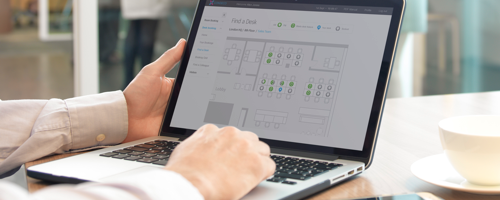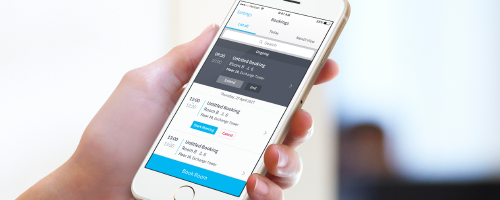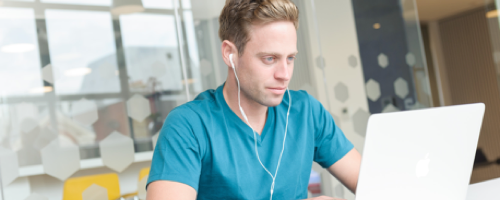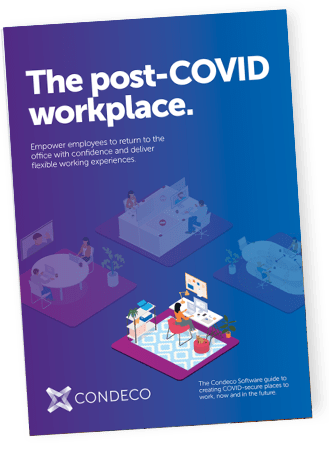Returning to the Office
Solutions to help your employees and your business get back to the office and support a flexible workplace for today and the future.
Once the threat of COVID-19 subsides, the business world that emerges will be very different. Employees will expect a more flexible approach to the way they work and the will be a reduction or change in real estate needs.
Large parts of the workforce will want to reduce commute times and work more flexibly. The office will become a place to collaborate and meet with clients.
Condeco can help you safely return to the office and manage a flexible work environment.
Transitioning to flexible work
Workplaces before lockdown
Most employees worked in the office, with occasional working from home options. Workplaces were mainly designed for either assigned desks or for mobile workers who used hot-desking, which was mainly operated as free-addressing – turn up and sit down. With 1.2 employees per desk as the accepted ratio for non-assigned workspaces and around 10m2 per workspace for higher density benches and team tables.
Today: Returning to the office
60% of employees will remain working from home due to safety of commuting and reduced desk availability in the office. Booking a desk for a whole day in the office will be the requirement in order to meet new sanitization rules, with no free-addressing available. Employee to desk ratios will change, with three employees per usable desk, and the space per desk increasing to 20m2 to meet social distancing mandates. Overnight sanitization of workspaces will be performed before employee changeover.
Long term: Flexible work
Fully adopted flexible work practices with employees choosing where to work will become the new global standard, coming into the office infrequently to collaborate and meet clients. Employees will continue to reserve personal spaces when visiting the office meaning a significant reduction in real estate, with 15m2 per workspace provision as the norm and reduced use of open benching and team tables, reducing employee demand for office space.
Flexible work now the norm
Flexible work is no longer optional and free addressing will be impractical, and inappropriate.
Did you know?
1 in 3 employees would not want to work for a company that required them to be on-site full time.
Actively managing workspaces
Re-shaping the office to manage workstation availability and sanitization.
Reconfigure workspace for less dense environments
Reconsidering desk layouts so you can ensure social distancing requirements.
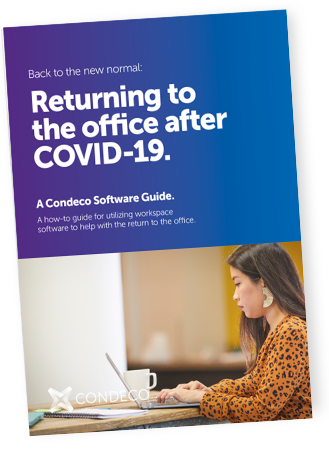
Guide: Returning to the office after COVID-19
Free to download our guide to helping you return to the office and plan for the future of our workplace.
Download now: Returning to the office after COVID-19
Updating the workspace purpose
Rethinking your office purpose: less capacity but more collaboration.
Technology resolves practical workspace issues quickly
Tools that deliver for your employees and business alike.
Return on Investment
A strong technology-based solution is the only way to effectively manage the return to the office, but the investment in technology will be repaid in productivity and an eventual reduction in real estate.
Return to the office
- Increase business productivity by returning to a level of normality with employees able to meet with their teams to better collaborate and plan.
- Increase customer interaction with the ability to safely meet clients at the office.
- Meet government guidelines on employee safety and sanitization reduces potential risk of litigation.
- 50% less cleaning costs by only deep cleaning desks when employee changeovers are scheduled.
The new normal
- 50% reduction in real estate cost can be achieved by right-sizing the workspace to meet the new levels of demand.
- 100% reduction in disaster recovery costs are possible by removing the need to have alternative workspaces permanently available and changing to working from home in the event of an issue.
- Improve employee productivity and talent attraction by providing a true flexible working environment where employees can choose where they work from, which reduces commute times, stress and promotes employee general wellbeing.
How do I manage the return to the workplace?
Flexibility and reduced reliance on physical offices are set to become long-term arrangements. So what will the key trends be and how do we deliver them?
A strong technology-based solution is the only way to effectively manage the return to the office, but the investment in technology will be repaid in productivity and an eventual reduction in real estate.
Desk management systems
Enable social distancing in the workplace by controlling space and capacity to ensure employees are not exposed to risk.
Mobile space booking on the move
Find and book available workspace on the mobile app or mark as ‘working from home’ easily.
Cloud technology
Standardize onto one single, scalable and secure workplace management solution in Microsoft Azure Cloud.

